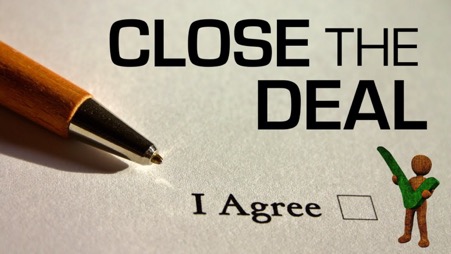Acquiring Success: Comparing Business vs Asset Acquisition Strategies and Choosing the Best Target Acquisition Method
30 Jan 2023
11 Aug 2020
min read

Growth by acquisition is a powerful strategy that can help your company expand at a quick pace. While this sounds attractive for your company, succeeding at it requires careful planning and strategic logic. Acquisition refers to the process of a business acquiring a target company to build on the strengths of the company. There are a wide variety of acquisitions, meaning that there is no ‘correct’ strategy. As such, you need to consider all factors and weigh the pros and cons before deciding on how to proceed.
We will be covering everything you need to know about acquisitions such that you can make an informed decision on what the best and most value-add target acquisition strategy is for your company.
A. What is the best target acquisition strategy?
Acquisition is a common business strategy used to obtain the market, territory, products, technology, intellectual property, resources, culture, or talents of a target. It is often cheaper, quicker, and less risky to acquire them from a target than to try to develop them internally. However, for acquisitions to be successful, there must be some strategy supporting them.
The first and most important step is to identify a suitable target for acquisition that is valued at a reasonable price. Once a target has been identified, one will need to decide on the best strategy for acquisition, which should be based on initial due diligence. This article outlines two main types of acquisition strategies: business and asset acquisition. We will also explain the pros and cons of each type of acquisition from a legal perspective. Also included in the article are acquisition agreements, warranties, and due diligence checklists available for download.
1. What is an acquisition?
Acquisition means buying or obtaining an asset or object. In business terms, an acquisition refers to a corporate transaction to purchase another company partially or in full. An acquisition is also one of the three types of business combinations, the other two being merger and amalgamation.
An acquisition is not easy to carry out and requires the help of professionals, such as lawyers and accountants. You may also choose to do it by yourself to save money. Documents you will need can be found here - Sale and Acquisition of Asset, Business or Company. You can also refer to below for the due diligence checklists:
1. Company Acquisition Checklist
2. Business / Asset Acquisition Checklist
2. Why acquire a company?
There are many reasons why a company would acquire another company. Through the acquisition, the acquiring company can benefit and obtain for themselves the strengths of the target company. The most common reasons include:
-
Reducing business costs by developing a corporate production line or service line
-
Reducing competition from other companies
-
Expanding the business by growing through adjacent markets
-
Opening up another geographical market
-
Improving business performance by combining the perks of both companies, ie. synergy

B. What is the difference between mergers and acquisitions?
The term “mergers and acquisitions” (M&A) commonly pops up in corporate transactions. However, mergers and acquisitions are two separate processes and should not be conflated.
An Acquisition allows both companies to remain as separate legal entities while one of the companies becomes the parent company of the other company or acquires the assets of the other company.
A Merger combines two legal entities, with the stronger entity surviving and taking the assets and liabilities of the two entities.
An Amalgamation means that the assets and liabilities of the amalgamating entities are transferred or novated to a new entity and none of the original companies survives after the amalgamation.
C. Types of acquisition strategy - business acquisition vs asset acquisition
In a Business Acquisition (also known as company or shares acquisition), the buyer purchases a majority of the target company’s shares, which comes with legal obligations. The acquiring company would become the new owner of the target company, while they remain as different legal entities.
In an Asset Acquisition, the buyer purchases all or some of the target company’s assets rather than the company's shares. The advantage of this approach is that it allows a buyer to pick and choose the assets and liabilities of the company the buyer wants to buy. The common assets acquired may include real property such as real estate and office equipment, as well as intellectual property such as copyright, trademarks, and patents. Similarly, the two companies maintain separate legal entities even if the acquiring company purchases all the assets.

D. Business/company/shares acquisition
A business acquisition refers to the corporate purchase of another company’s shares. It allows the acquiring company to gain control of the target company. Holding more than 50% of the target company’s stock (and/or other assets), allows the acquiring company to have an overriding decision-making power without the need for approval by other shareholders.
A business acquisition agreement is a contract that governs the corporate transaction of the purchase of shares. Click here if you want to know the difference between a Business Acquisition Agreement that Favours the Buyer and a Business Acquisition Agreement that Favours the Seller.
1. Pros: tax benefit
After acquiring stock (entailing ownership) of a company, tax is calculated according to capital gain or loss. This is equivalent to the difference between sales proceeds and the tax basis in the stock. Any gain would be taxed at the favourable long-term capital gain rate, which is 20% in the US. The corporation's tax attributes remain with the buyer and can offset income generated after the sale.
In other words, the buyer generally pays less tax by acquiring ownership of the target company, compared to acquiring assets. On the contrary, the problem of double taxation occurs for asset acquisition, as the buyer would be taxed separately as shareholders and as a corporate entity.

2. Cons: rigidity
In a business acquisition, liabilities are attached to ownership. The acquiring company cannot choose which part of the target company it would like to acquire. The buyer needs to take responsibility for undesirable items such as unprofitable financial status and unfulfilled legal obligations.
A business acquisition offers little protection to the buyer from assuming the seller's liabilities, especially when the liabilities are contingent or unknown. Thus, asset acquisition is a much more popular choice, particularly for the acquisition of insolvent companies.
3. Common application: investors cashing out
After years of business growth, a start-up company may start to generate an overall profit. Initial or early investors may wish to “cash-out” their investment by exiting the company. The two most common ways of exiting a company are selling it to an international giant company or offering it on the stock market (this is called an initial public offering, as known as IPO).
For investors to cash out, the acquiring company needs a Business Acquisition Agreement to purchase the majority shares of the target company. In the business acquisition agreement, founders are often allowed to remain shareholders to keep them motivated and continue developing their business.
To learn more about early investments before cashing out, click to view the Top 3 Capital Raising and Investment Agreements for Startups (Free Templates).

E. How to draft a business acquisition agreement
Negotiations are indispensable during business acquisitions. Usually, negotiations kick off with a Letter of Intent in which the buyer expresses an intention to purchase and acquire the addressee’s business.
After rounds of negotiations, due diligence should be conducted to confirm the material information and documents. Read through this Due Diligence Checklist for Business Acquisition to make sure you have everything ready before drafting the Agreement.
Now, let us get into the 5 elements of a business acquisition agreement.
1. Buyer & seller
This is perhaps the most vital part of the business acquisition agreement as it determines whether ownership is purchased validly. To ensure that it is valid, a detailed description of the acquiring company and the target company is needed. Most importantly, you should identify the correct buyer and seller as some joint ventures do not exist in one single legal entity. If you want to understand more about business entities and structures, you can check out our dedicated blog post here.
2. Price
The purchase price must be expressed clearly in writing as the buyer and seller often hold different views during the negotiation. The purchase price includes working capital, which means the amount of money needed for the day-to-day operation of the business during the acquisition.
The working capital may include:
-
Inventory
-
Accounts receivable
-
Pre-paid items such as insurance or subscription services
3. Payment method
In a business acquisition, it is common for the acquiring company to make payments in instalments. With this payment method, the buyer will have to sign a significant down payment before signing a promissory note which outlines the amount of the payments and how long the buyer will take to pay off the seller. In some rare cases, resourceful buyers will make a lump-sum purchase.

4. Representations & warranties
Warranty is an official legal document that gives rise to liability when representations made, or information provided by the seller is untrue. It helps offer security to buyers in agreements. Typically, the warranties reflect the items discussed and disclosed during the due diligence process.
In a business acquisition agreement, representations and warranties usually comprise of the following items:
-
The legal status of the business
-
Authority of the Seller to transact business on behalf of the company
-
Business structure
-
Financial documents, including tax documents and financial statements
-
Legal documents, including
-
Employee information, including retirement plans and employee profiles
-
Whether there are any pending lawsuits against the business
Oftentimes, parties choose to draft a separate document – this is called the Business Acquisition Warranties. You can look at a free sample drafted by us.
5. Requirements for closing the deal
A business acquisition agreement should clearly state the timetable the acquisition process will follow. Negotiations should only continue until the closing date, which should also be agreed upon by both the buyer and seller.
The following documents are required to be executed at the closing of the deal:
-
Bill of sale
-
Directors' agreement(s)
-
Shareholders agreement(s)
-
Resignations of directors and officers
-
Lease information
This section also outlines any agreements that will go beyond the closing date, including the protection of claims for breach of conditions or warranties.

F. Assets acquisition
An asset acquisition refers to the corporate purchase of another company’s assets, which constitutes real estate or intellectual property instead of its stock. It allows the acquiring company to gain possession of the beneficial or profitable assets selectively. The acquiring company is free from unwanted liabilities by acquiring assets instead of ownership.
An asset acquisition agreement is a contract that governs the corporate transaction of the purchase of assets. Click here if you want to know the difference between an Asset Acquisition Agreement that Favours the Buyer and an Asset Acquisition Agreement that Favours the Seller!
1. Pros: greater flexibility
Compared to mergers and stock purchases, asset acquisition provides greater flexibility regarding the liability the buyer assumes. Not only can the buyer choose which specific assets to purchase, but they can also choose liabilities to take. This allows the buyer to avoid undesirable responsibilities and maximise business gains.
2. Pros: the buyer has more autonomy
Another advantage of choosing asset acquisition is that the buyer enjoys absolute autonomy over the asset purchased. The acquiring company can make decisions over the acquired assets without the need for approval by shareholders from the target company. On the contrary, after a Business Acquisition, the use of assets still depends on the shareholder’s decision if protective terms for minority shareholders are in force.
3. Cons: It is time-consuming
Dissecting a business's assets and liabilities can be a complex and troublesome procedure. The process of asset acquisition takes more time as the buyer needs to identify their desired assets and liabilities. Comparatively, purchasing stock in a business acquisition requires little evaluation of the business.

#1 Common application: insolvent company
Asset acquisition is popular for the acquisition of insolvent companies which are close to the edge of liquidation or bankruptcy. This is because the buyer is not interested in acquiring the entire company (due to its financial state) – bearing the debt and obligations only creates more trouble for the acquiring company. Therefore, the buyer would prefer to just acquire the assets, which costs less and brings less trouble.
#2 Common application: buy-off offers rejected
Imagine you are a buyer who wishes to acquire a prosperous company that could generate high profits in the future. You offer to purchase the business in full, but the founders rejected it despite the huge financial benefits. What should you do? Here comes the asset acquisition strategy.
An asset acquisition strategy is a business strategy used to gain control of a target company by acquiring assets instead of stock, when chances to buy enough shares to take over are slim. The buyer breaks up the target company into smaller pieces and acquires its key assets one at a time. Eventually, the target company becomes dependent on the buyer and would allow him/her to reap and acquire full ownership.

G. How to draft an asset acquisition agreement
Like a business acquisition, an asset acquisition is kicked off by a letter of intent in which the buyer expresses their intention to purchase and acquire the addressee’s assets. After negotiation, due diligence will be conducted to confirm the material information and documents.
Now, we can move on to covering the 5 elements of an Asset Acquisition Agreement.
1. Buyer & seller
Like a business acquisition agreement, it is vital to specify the buyer and seller accurately. Make sure you give a detailed description of the acquiring company and the target company.
Read about the Difference between Corporate Structures to identify the right buyer and seller.
2. Purchased assets & price
In an asset acquisition, providing a clear and exact description of the asset purchase is probably the most important thing to do. Include as many details as you can. Make sure the details match with the descriptions on government records.
Here are the descriptions you should provide for some common assets purchased:
-
Real Estate/Land: acreage, buildings, parking space, constructions
-
Intellectual Property: copyright registration, patent registration, trademark registration
-
Services: nature of service, equipment, training
Just like other agreements, you should also include the confirmed purchase price after negotiations. The valuation of the asset relies on its market price primarily. Its expected contribution to profits is also considered.

3. Method of payment
Similarly, in an asset acquisition, it is the buyer who can choose whether they want to pay in instalments or a lump-sum payment. If the transaction involves the seller financing, the buyer may remit a portion of the purchase price at the closing of the deal and simultaneously sign a promissory note for the remainder of the purchase price.
4. Representations and warranties
As previously mentioned, the warranty is an official legal document, which is someone who likes a disclaimer, ensuring that the information provided by the seller is true. It protects buyers by ensuring the quality of the asset bought. Breaching the warranties may result in termination of the Asset Acquisition Agreement, financial penalty, or even litigation.
In an asset acquisition agreement, it is essential to provide the following representations and warranties:
-
Fitness of the asset for a particular purpose
-
Condition or quality of the asset purchased
-
The legal status of the buyer and seller
-
Any other documents that relate to the liability the buyer undertakes
5. Requirements for closing the deal
The requirements for the acquisition to close should be stated clearly in the asset acquisition agreement.
Common requirements include:
-
Delivery of the purchase price
-
Approval of the sale by third parties such as government agencies
-
Completion of changes or repairments to assets prior to sale
-
End of price adjustments
Agreement templates
DOWNLOAD FOR FREE: Business Acquisition Agreement - with Buyer's Guarantor - Seller
A business acquisition agreement between a buyer and a seller with the buyer's parent guaranteeing the obligations. The seller's warranties are included in another template. This agreement is drafted in favour of the seller.
DOWNLOAD FOR FREE: Business Acquisition Agreement - with Buyer's Guarantor - Buyer
A business acquisition agreement between a buyer and a seller with the buyer's parent guaranteeing the obligations. The seller's warranties are included in another template. This agreement is drafted in favour of the buyer.
DOWNLOAD FOR FREE: Business Acquisition Agreement - Warranties
Seller’s warranties concerning a business acquisition. This can be inserted as a schedule into the business acquisition agreement. These warranties are drafted in neutral form.
DOWNLOAD FOR FREE: Asset Acquisition Agreement - Seller
An assets acquisition agreement between a buyer and a seller. This relates to the transfer of existing/used assets (e.g. equipment but not real property). This agreement is drafted in favour of the seller.
DOWNLOAD FOR FREE: Asset Acquisition Agreement - Buyer
An assets acquisition agreement between a buyer and a seller. This relates to the transfer of existing/used assets (e.g. equipment but not real property). This agreement is drafted in favour of the buyer.
Please note that this is just a general summary of Business Acquisition vs Assets Acquisition under common law and does not constitute legal advice. As the laws of each jurisdiction may be different, you may want to speak to your local legal advisor.
Keywords: